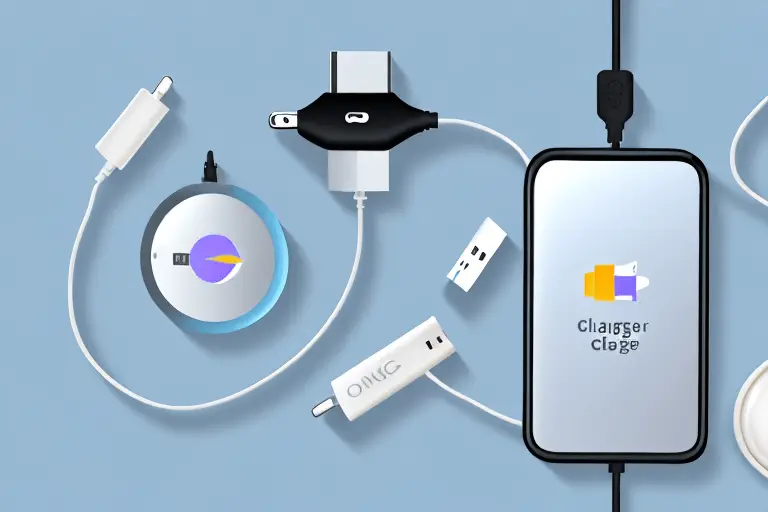Gadgets
Chargomez1: A Comprehensive Guide to Charging Your Devices
Published
1 year agoon
By
Jack
Are you tired of constantly dealing with dead batteries and slow charging speeds? Charging your devices is a fundamental aspect of owning and using technology, yet many people still have misconceptions and lack knowledge about proper charging techniques. In this comprehensive guide, we will dive into the world of device charging and explore everything you need to know to keep your devices charged and functioning optimally. So, let’s begin by understanding the basics of device charging.
Table of Contents
ToggleUnderstanding the Basics of Device Charging
Charging your device is not simply a matter of plugging it in and waiting for the battery to fill up. It involves understanding the intricacies of the charging process and the impact it has on your device’s battery life and overall performance.
When it comes to charging your device, it’s important to know that not all chargers are created equal. Different devices have different charging requirements, and using the wrong charger can potentially damage your device or result in slower charging speeds. It’s always best to use the charger that came with your device or a charger that is specifically designed for your device’s make and model.
Another factor to consider is the charging cable. The quality of the cable can affect the charging speed and efficiency. Using a low-quality or damaged cable can result in slower charging or even intermittent charging. It’s a good idea to invest in high-quality cables that are made with durable materials to ensure optimal charging performance.
The Importance of Proper Charging
Proper charging plays a crucial role in preserving your device’s battery health and maximizing its lifespan. By following the recommended charging practices, you can minimize the risk of battery degradation and enjoy longer-lasting performance.
One important aspect of proper charging is avoiding extreme temperatures. Charging your device in extremely hot or cold environments can have a negative impact on the battery’s performance and lifespan. It’s best to charge your device in a cool, well-ventilated area to prevent overheating and ensure efficient charging.
It’s also important to avoid overcharging your device. Leaving your device plugged in and charging for extended periods can put unnecessary stress on the battery and lead to reduced battery capacity over time. Once your device reaches a full charge, it’s recommended to unplug it to prevent overcharging.
Common Misconceptions About Charging Devices
There are several misconceptions surrounding device charging that can lead to inefficient charging and potential damage to your device. We debunk these myths and provide clarity on how to charge your devices correctly.
One common misconception is that it’s necessary to completely drain your device’s battery before charging it. This is not true for most modern devices. In fact, lithium-ion batteries, which are commonly used in smartphones and other portable devices, perform best when they are charged frequently and kept at a moderate charge level. It’s recommended to charge your device when the battery level drops to around 20-30% to maintain optimal battery health.
Another misconception is that using your device while it’s charging can damage the battery. While it’s true that using power-intensive apps or games while charging can generate heat and potentially affect the charging speed, using your device for normal tasks like browsing the internet or checking emails should not cause any harm. However, it’s still a good idea to avoid using power-hungry applications while charging to prevent excessive heat buildup.
Furthermore, some people believe that charging their device overnight will harm the battery. Most modern devices are equipped with advanced charging circuits that automatically stop charging once the battery reaches full capacity. This means that leaving your device plugged in overnight should not cause any significant harm to the battery. However, if you want to be extra cautious, you can unplug your device once it reaches a full charge.
Exploring Different Types of Chargers
Not all chargers are created equal. From wall chargers to portable chargers and wireless chargers, there are various options available to suit different needs and preferences.
Wall Chargers
Wall chargers are the most common type of charger and generally come with your device. They are designed to be plugged into a wall socket and provide a reliable and efficient way to charge your devices. However, not all wall chargers are the same.
When choosing a wall charger, it is important to consider the power output. The power output is measured in watts and determines how quickly your device will charge. A higher wattage charger will charge your device faster, but it is important to ensure that your device is compatible with the higher power output.
Another factor to consider is the number of USB ports. Some wall chargers come with multiple USB ports, allowing you to charge multiple devices at the same time. This can be particularly useful if you have multiple devices or if you are traveling with a group.
Additionally, some wall chargers come with built-in safety features such as surge protection and overcharge protection. These features help to protect your devices from power surges and prevent overcharging, which can extend the lifespan of your devices.
Portable Chargers
Portable chargers, also known as power banks, are a convenient solution for charging your devices on the go. They are essentially a portable battery pack that you can carry with you and use to charge your devices when you don’t have access to a wall socket.
One of the main benefits of portable chargers is their portability. They are small and lightweight, making them easy to carry in your bag or pocket. This makes them ideal for travel, outdoor activities, or simply for those times when you need a quick charge on the go.
When selecting a portable charger, it is important to consider its capacity. The capacity is measured in milliampere-hours (mAh) and determines how much charge the power bank can hold. The higher the capacity, the more times you can charge your device before needing to recharge the power bank itself.
Another consideration is the number of output ports. Some portable chargers come with multiple output ports, allowing you to charge multiple devices simultaneously. This can be useful if you are traveling with a friend or if you have multiple devices that need charging.
Additionally, some portable chargers come with additional features such as built-in cables or wireless charging capabilities. Built-in cables eliminate the need to carry extra charging cables, while wireless charging allows you to charge compatible devices without the need for cables.
Wireless Chargers
Gone are the days of tangled cables. Wireless chargers offer a clutter-free charging experience. They use a technology called inductive charging to transfer power from the charger to your device without the need for a physical connection.
Wireless chargers work by creating an electromagnetic field that transfers energy to your device. To charge your device, you simply place it on the wireless charger, and the charging process begins. This can be particularly convenient if you have multiple devices that support wireless charging, as you can simply place them on the charger without the need for multiple cables.
It is important to note that not all devices support wireless charging. Before purchasing a wireless charger, make sure that your device is compatible. Additionally, wireless charging may be slower than traditional wired charging, so it is important to consider your charging needs and preferences.
Some wireless chargers come in the form of charging pads, while others are built into furniture or accessories such as lamps or car mounts. This allows you to charge your devices seamlessly without cluttering your space.
With the advancement of technology, wireless charging is becoming more widespread and is supported by an increasing number of devices. It offers a convenient and hassle-free way to charge your devices, eliminating the need for cables and reducing clutter.
Safety Measures While Charging
While charging your devices, safety should always be a priority. In this section, we discuss important safety measures that every device owner should follow.
Avoiding Overcharging
Overcharging can have detrimental effects on your device’s battery. We explain how to prevent overcharging and protect your device’s battery longevity.
The Dangers of Cheap, Non-certified Chargers
Using cheap, non-certified chargers can pose serious risks to your device and even your safety. Discover the potential dangers associated with using substandard chargers and how to identify certified chargers.
Maximizing Your Device’s Battery Life
Charging is not just about replenishing your device’s battery; it also influences its overall lifespan. This section provides insights on how charging practices impact battery health and offers tips for maximizing your device’s battery life.
The Role of Charging in Battery Health
Your charging habits can significantly affect your battery’s overall health and performance. We delve into the factors that influence battery longevity and explain how to optimize your charging routines.
Tips for Prolonging Battery Life
Small changes in your charging habits can make a big difference in preserving your device’s battery life. We provide practical tips for extending battery longevity, such as adjusting charging settings and managing battery-intensive apps.
Troubleshooting Charging Issues
Despite taking all precautions, charging issues can still arise. In this section, we address common charging problems and provide troubleshooting steps to help you get back to full battery power quickly.
What to Do When Your Device Won’t Charge
Nothing is more frustrating than a device that refuses to charge. We outline steps to diagnose and resolve charging issues, from checking the charging cable to examining the charging port.
Dealing with Slow Charging Speeds
Slow charging can delay your device’s availability when you need it most. We explore potential causes of slow charging and offer solutions to help you speed up the charging process.
With this comprehensive guide to charging your devices, you are equipped with the knowledge and understanding to keep your devices charged efficiently and safely. By following these guidelines and implementing the tips provided, you can ensure that your devices are always ready to accompany you on your daily adventures.
Author

